Brutalism

|
Contents |
[edit] What is brutalism?
Brutalism, also known as Brutalist architecture, is a style that emerged in the 1950s and grew out of the early-20th century modernist movement. Brutalist buildings are characterised by their massive, monolithic and ‘blocky’ appearance with a rigid geometric style and large-scale use of poured concrete. The movement began to decline in the 1970s, having been much criticised for being unwelcoming and inhuman.
[edit] What are the characteristics of brutalism?
Brutalism is generally associated with rough, unfinished surfaces, unusual shapes, heavy-looking materials, straight lines, and small windows. Modular elements are often used to form masses representing specific functional zones, grouped into a unified whole. As well as concrete, other materials commonly used in brutalist buildings included brick, glass, steel, and rough-hewn stone.
[edit] What is the history of brutalism
The term ‘Brutalism’ was first coined by the British architects Alison and Peter Smithson, and was then popularised by the architectural historian Reyner Banham in 1954. It is derived from ‘Béton brut’ (meaning raw concrete) and was first associated in architecture with Le Corbusier, who designed the Cite Radieuse in Marseilles in the late-1940s.
Brutalism became a popular style throughout the 1960s as the austerity of the 1950s gave way to dynamism and self-confidence. It was commonly used for government projects, universities, car parks, leisure centres, shopping centres, and high-rise blocks of flats.
Brutalism became synonymous with the socially progressive housing solutions that architects and town planners promoted as modern ‘streets in the sky’. With an ethos of ‘social utopianism’. Together with the influence of constructivist architecture, it became increasingly widespread across European communist countries such as the Soviet Union, Bulgaria, Yugoslavia, and Czechoslovakia.
As high-rise buildings became associated with crime, social deprivation and urban decay, so Brutalism was increasingly reviled, and across the UK, many Brutalist buildings were demolished. Typical of this adverse reaction was the demolition in 2019 of the multi-storey car park in Welbeck Street, London W1. However, Brutalism has continued to influence later forms, associated with high-tech architecture and de constructivism. In recent years, it has been critically reappraised, with certain buildings being seen as architectural landmarks.
In 2006, three architects from Boston, Massachusetts initiated a rebranding campaign to relabel Brutalism as Heroic architecture. The effort attempts to remove the negativity of the original term while preserving its reference to its scale and substance.
[edit] Examples of brutalist architecture
7 examples of brutalist architecture are shown below.
Park Hill, Sheffield
Preston Bus Station, Preston
Welbeck Street car park (demolished 2019)
[edit] International styles of brutalism
3 examples of international styles of brutalism are:
Some other great resources to find out more about Brutalism are:
[edit] Related articles on Designing Buildings
- Architectural styles.
- Bauhaus.
- Boom Cities: architect-planners and the politics of urban renewal in 1960s Britain.
- British post-war mass housing.
- Brutalist London Map - review.
- Chinese brutalism.
- Cite Radieuse.
- Concrete.
- Constructivist architecture.
- Deconstructivism.
- Erno Goldfinger.
- Heroic architecture.
- High-tech architecture.
- Howell Killick Partridge and Amis.
- Italian brutalism.
- Megastructure.
- Owen Hatherley - Landscapes of Communism.
- Sink estate regeneration plans.
- SOS Brutalism: a global survey.
- Space, Hope and Brutalism.
- Spanish brutalism.
- Spomeniks.
- Trellick Tower.
- Whittington Estate.
[edit] External resources
- Dezeen - Guide to Brutalist architecture.
Featured articles and news
The UK's Modern Industrial Strategy: A 10 year plan
Previous consultation criticism, current key elements and general support with some persisting reservations.
Building Safety Regulator reforms
New roles, new staff and a new fast track service pave the way for a single construction regulator.
Architectural Technologist CPDs and Communications
CIAT CPD… and how you can do it!
Cooling centres and cool spaces
Managing extreme heat in cities by directing the public to places for heat stress relief and water sources.
Winter gardens: A brief history and warm variations
Extending the season with glass in different forms and terms.
Restoring Great Yarmouth's Winter Gardens
Transforming one of the least sustainable constructions imaginable.
Construction Skills Mission Board launch sector drive
Newly formed government and industry collaboration set strategy for recruiting an additional 100,000 construction workers a year.
New Architects Code comes into effect in September 2025
ARB Architects Code of Conduct and Practice available with ongoing consultation regarding guidance.
Welsh Skills Body (Medr) launches ambitious plan
The new skills body brings together funding and regulation of tertiary education and research for the devolved nation.
Paul Gandy FCIOB announced as next CIOB President
Former Tilbury Douglas CEO takes helm.
UK Infrastructure: A 10 Year Strategy. In brief with reactions
With the National Infrastructure and Service Transformation Authority (NISTA).
Ebenezer Howard: inventor of the garden city. Book review.
The Grenfell Tower fire, eight years on
A time to pause and reflect as Dubai tower block fire reported just before anniversary.
Airtightness Topic Guide BSRIA TG 27/2025
Explaining the basics of airtightness, what it is, why it's important, when it's required and how it's carried out.
Construction contract awards hit lowest point of 2025
Plummeting for second consecutive month, intensifying concerns for housing and infrastructure goals.
Understanding Mental Health in the Built Environment 2025
Examining the state of mental health in construction, shedding light on levels of stress, anxiety and depression.






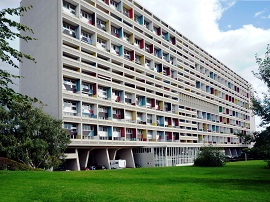
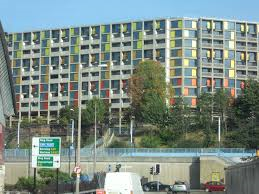
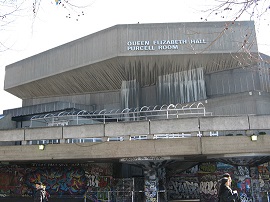

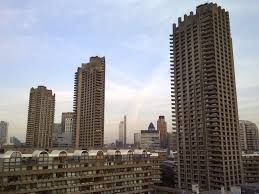
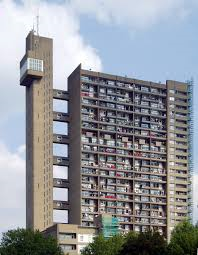

















Comments
To make a comment about this article, click 'Add a comment' above.
Separate your comments from any existing comments by inserting a horizontal line.
Hacettepe University should be on the list.
Never really liked brutalism - the clue is in the title.